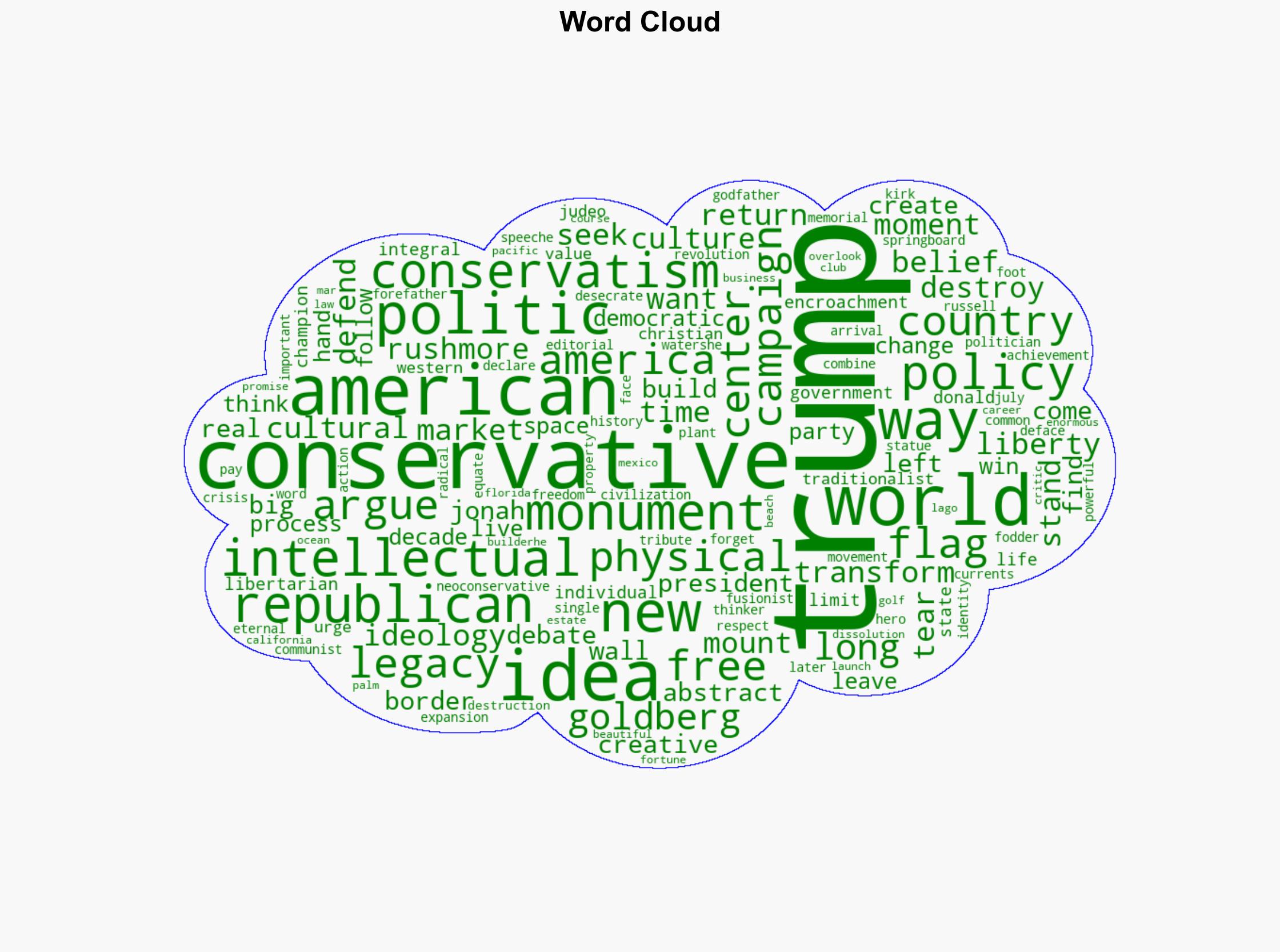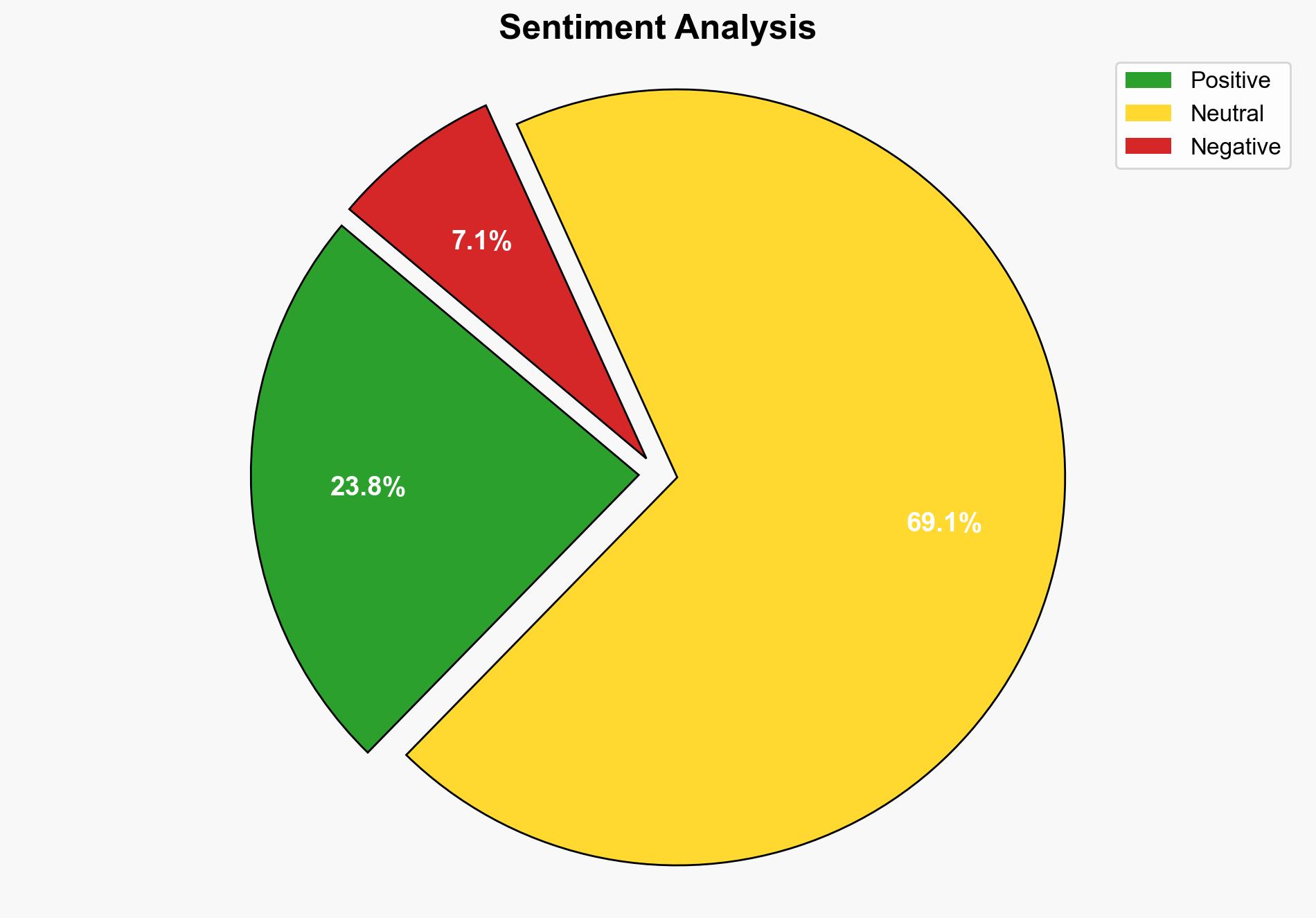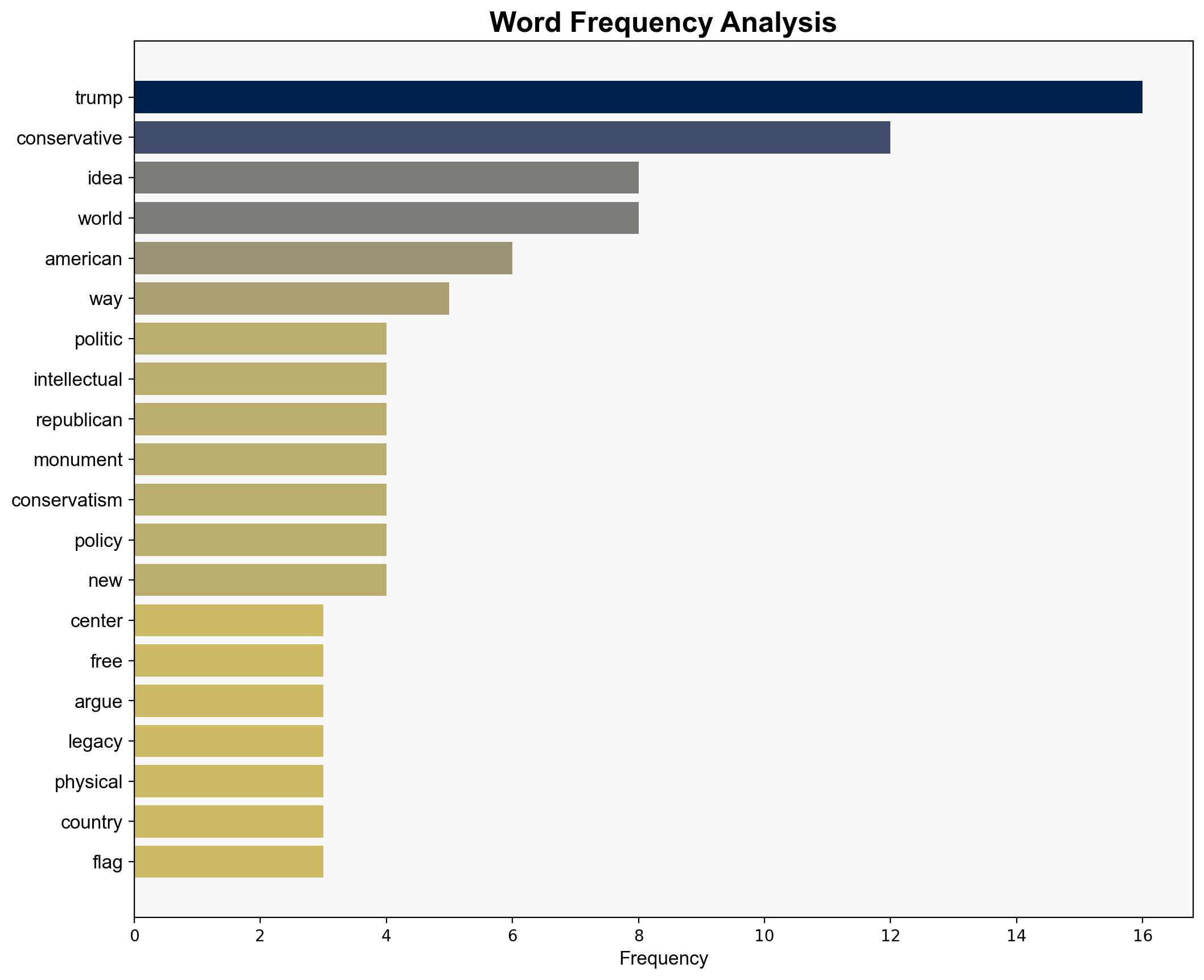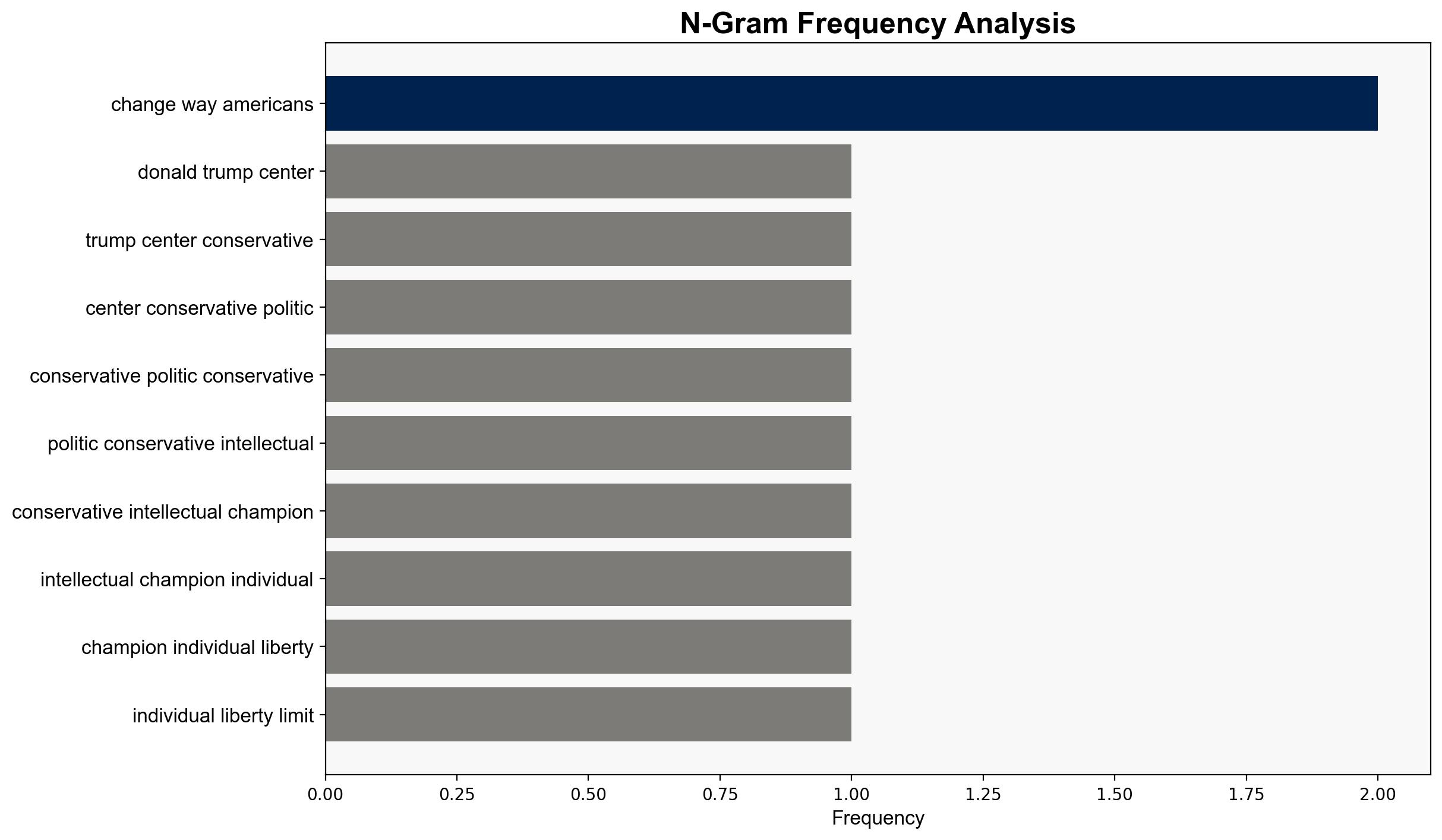How Trump Changed Conservatism – Realclearhistory.com
Published on: 2025-10-22
Intelligence Report: How Trump Changed Conservatism – Realclearhistory.com
1. BLUF (Bottom Line Up Front)
The analysis suggests that Donald Trump’s influence on conservatism has created a significant ideological shift, emphasizing nationalism and populism over traditional conservative tenets. The most supported hypothesis is that Trump’s approach has redefined conservatism to prioritize tangible, symbolic actions over abstract ideological debates. Confidence level: Moderate. Recommended action: Monitor ongoing shifts within conservative movements and assess potential impacts on future political landscapes.
2. Competing Hypotheses
1. **Hypothesis A**: Trump’s presidency has fundamentally transformed conservatism by shifting its focus from intellectual and ideological debates to action-oriented nationalism and populism. This hypothesis is supported by Trump’s emphasis on physical symbols like the border wall and his stance against cultural changes perceived as threats to traditional American values.
2. **Hypothesis B**: Trump’s influence on conservatism is temporary and superficial, with traditional conservative principles likely to reassert themselves post-Trump. This view suggests that Trump’s impact is more about his personal brand and less about a lasting ideological shift.
3. Key Assumptions and Red Flags
– **Assumptions**: Hypothesis A assumes that Trump’s actions and rhetoric have a lasting impact on the conservative base. Hypothesis B assumes that the conservative intellectual tradition remains resilient and capable of reasserting influence.
– **Red Flags**: The analysis may overlook the potential for emerging conservative leaders to blend Trump’s populism with traditional conservative values, creating a hybrid ideology. Additionally, the reliance on symbolic actions could mask deeper ideological shifts.
4. Implications and Strategic Risks
– **Patterns**: The shift towards nationalism and populism could lead to increased polarization and challenges in bipartisan cooperation.
– **Cascading Threats**: A continued focus on symbolic actions over substantive policy could exacerbate divisions within the conservative movement, potentially leading to splinter groups.
– **Potential Escalation**: If Trump’s brand of conservatism gains further traction, it may influence other right-wing movements globally, impacting international relations and alliances.
5. Recommendations and Outlook
- Monitor emerging conservative leaders for signs of ideological shifts or continuity with Trump’s approach.
- Engage in dialogue with conservative intellectuals to assess potential re-alignments within the movement.
- Scenario Projections:
- Best: A balanced integration of traditional and Trump-era conservatism leads to a more cohesive movement.
- Worst: Deepening divisions within conservatism result in fragmented political influence.
- Most Likely: Continued tension between traditionalists and populists shapes the conservative agenda.
6. Key Individuals and Entities
– Donald Trump
– Jonah Goldberg
– David Brooks
– William Buckley
7. Thematic Tags
national security threats, political ideology, cultural transformation, populism, nationalism





